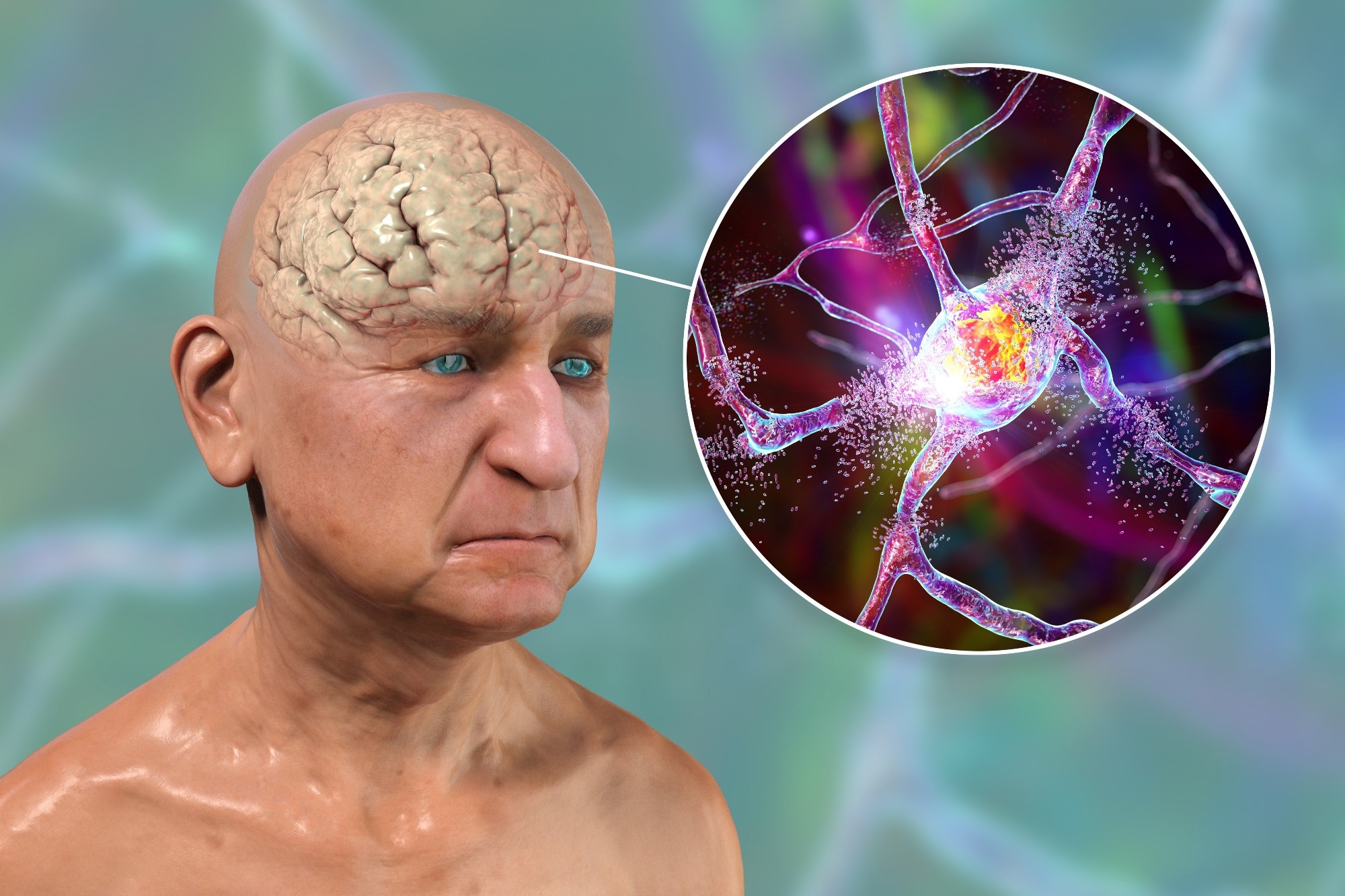In a recent study published in The American Journal of Geriatric Psychiatry, researchers review the neuroinflammation mechanisms associated with depression, Alzheimer’s disease, and obesity, the therapeutic options for decreasing neuroinflammation, and radiological initiatives for assessing neuroinflammation.
 Study: Neuroinflammation: A Modifiable Pathway Linking Obesity, Alzheimer’s Disease, and Depression. Image Credit: Kateryna Kon / Shutterstock.com
Study: Neuroinflammation: A Modifiable Pathway Linking Obesity, Alzheimer’s Disease, and Depression. Image Credit: Kateryna Kon / Shutterstock.com
Background
Alzheimer’s disease, obesity, and depression are the three most prevalent global health crises. Recent estimates suggest that by 2050, over 150 million individuals will be diagnosed with Alzheimer’s disease.
Depression affects over 300 million individuals and is the foremost cause of loss of productive life years and disability. Obesity is also rapidly becoming a global health epidemic, with close to 36% and 38% of men and women worldwide, respectively, considered overweight or obese.
These three diseases are also interconnected, with depression in early- or mid-life being a risk factor for Alzheimer’s disease and in the later years being a prodrome or early manifestation of Alzheimer’s disease. The relationship between depression and obesity is also complex, with obesity leading to comorbid depression and depression increasing the risk of obesity.
Mid-life obesity is also an independent risk factor for Alzheimer’s disease. In fact, the inflammatory state of obesity is linked to the pathophysiology of depression and Alzheimer’s disease.
Mechanisms of neuroinflammation
Chronic inflammation may also contribute to the immune dysregulation linked to gut microbiome dysbiosis, metabolic changes, or amyloid pathology interactions leading to neuroinflammation. Obesity-associated chronic inflammation is believed to affect the central nervous system, subsequently leading to cognitive decline and neurodegeneration.
Neuroinflammation driven by obesity may occur through various mechanisms. For example, proinflammatory cytokines such as interleukin-6 (IL-6) and tumor necrosis factor-alpha (TNF-α) could lead to the secretion of adrenocorticotropic hormone and activate the hypothalamic-pituitary-adrenal axis, subsequently leading to hypercortisolemia, dendritic atrophy, neuronal apoptosis, and reactive gliosis.
Diets high in fats have also been linked to activation of the renin-angiotensin-aldosterone system and gut microbiome dysbiosis. Previous in vivo studies have shown that high-fat diets obstruct neurogenesis by reducing the expression of non-coding ribonucleic acid (RNA) and messenger RNA (mRNA) needed for neurogenesis.
High-fat diets also lower calcium signaling, decrease the levels of brain-derived neurotrophic factor, and increase the hippocampal adenosine monophosphate-activated protein kinase signaling levels, thereby leading to decreased neurogenesis.
Animal models of obesity have also demonstrated an increase in the permeability of the blood-brain barrier (BBB). This allows proinflammatory cytokines to enter the hypothalamus, thereby increasing leptin and insulin levels to ultimately cause chronic activation of microglia.
Oxidative stress mediated by obesity is a hallmark of depression and Alzheimer's disease. Obesity-induced production of reactive oxygen species (ROS) due to mitochondrial dysfunction may alter synaptic function and axonal transport, which is exacerbated by ROS produced by the beta-amyloid plaques.
Obesity-related neuroinflammation and insulin resistance may also contribute to the pathophysiology of depression and Alzheimer’s disease. Possible mechanisms for this association include the activation of astrocytes and microglia into neurotoxic subtypes and disruption of the glycogen synthase kinase-3 pathway that is essential for synaptic plasticity and neurogenesis.
The association between obesity and the risk of Alzheimer’s disease is complex, as mid-life obesity is linked to a higher risk of developing Alzheimer’s disease. Comparatively, healthy adiposity does not appear to impact metabolic dysregulation in older adults and has been shown to have neuroprotective effects.
Weight loss among older adults has also been linked to cognitive decline in older adults and is recognized as a potential indicator of cognitive decline in Alzheimer’s disease.
Interventions
Some of the major interventions that can be used to reduce inflammation associated with obesity, Alzheimer’s disease, and depression include lifestyle changes such as increased physical activity, dietary and calorific restrictions, and bariatric surgery.
Pharmacological interventions include anti-depressants to reduce neuroinflammation, statins to decrease hyperlipidemia and subsequently lower proinflammatory mediators, as well as non-steroidal anti-inflammatory drugs (NSAIDs) to lower the risk of Alzheimer’s disease.
Imaging initiatives are essential for understanding the pathophysiology of the disease, as well as for monitoring disease progression and intervention outcomes. Positron emission tomography (PET) using biomarkers such as translocator protein 18 kilo Dalton (kD) has been used to monitor neuroinflammation in depression and Alzheimer’s disease. Other markers of neuroinflammation may include type 2 cannabinoid receptors, cyclooxygenase-2, and arterial spin labeling.
Conclusions
Neuroinflammation leading to neurodegeneration is a cumulative effect of various events; therefore, it is essential to detect and address inflammation and pathology in its early stages. These findings indicate that therapeutic strategies need to shift their focus to the metabolic imbalances and systemic inflammation signs that occur in mid-life.
The current review also addresses socioeconomic and racial disparities that contribute to the occurrence of Alzheimer’s disease, depression, and obesity. Furthermore, advancements in imaging initiatives may improve disease monitoring and the understanding of neuroinflammation and disease progression.
Journal reference:
- Ly, M., Yu, G. Z., Mian, A., et al. (2023). Neuroinflammation: A Modifiable Pathway Linking Obesity, Alzheimer’s Disease, and Depression. The American Journal of Geriatric Psychiatry. doi:10.1016/j.jagp.2023.06.001